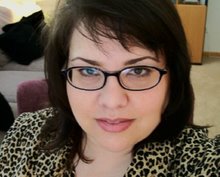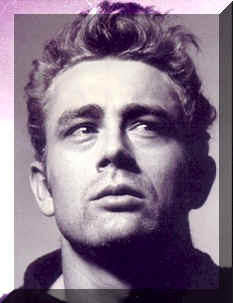The bipolarity index: how bipolar are you?
Medscape: . . . It's not a categorical “yes” or “no”, you're bipolar or not, but rather, “To what extent are you bipolar?”
Dr Sachs: Yes, and we're not looking to replace the Diagnostic and Statistical Manual with it. What we're trying to do is answer the patient's biggest question, “How likely is it that I have this disorder?” And it isn't that we're infallible, either; it's just that we are able to approach it more as a continuous issue, rather than as a black-and-white, yes-no.1
This exchange indicates just how far the bipolar diagnostic paradigm has shifted—not toward replacing DSM, but toward thinking in spectrum as well as categorical terms. Dr Sachs is referring to a new instrument that is currently in use, among other tools, at the bipolar disorders clinic at MGH: the Bipolarity Index. This diagnostic tool, which is still being tested, awards 100 total points for 5 dimensions of bipolarity:
Episode characteristics (hypomania or mania).
Age at onset.
Illness course.
Response to medication.
Family history.
At present, each dimension is worth 20 points. As the tool is studied, these will likely acquire different weightings. For now, the index simply illustrates an interest in systematically gathering data regarding signs and symptoms other than hypomania or mania. It shows that Dr Sachs and colleagues are thinking in spectrum terms (as well as categorically). The index and the current scoring system are available for download, along with other tools used in the MGH clinic (via http://www.manicdepression.org/), although Dr Sachs would likely emphasize how preliminary the work with this index remains at present.
Paper-and-pencil bipolar testing: MDQ or Bipolar Spectrum Diagnostic Scale (BSDS)?
A more widely studied aid for bipolar diagnosis is the MDQ. As most readers are likely to know, the MDQ presents a series of yes-or-no questions for the patient to answer, which involve the DSM criteria for hypomania/mania. The MDQ has become the de facto standard for bipolar screening, even though in some settings the sensitivity and specificity are not very reassuring, leading some authors to conclude that the test is not sufficiently accurate for use as a screening tool.9 However, it appears that a powerful determinant of its accuracy is the “hunch” of the user before the test—the “pretest probability.”10 Surprisingly, this has at least as much impact as the sensitivity and specificity on the predictive value of the test result. Thus, results from this test are only of value if the pretest probability can be estimated; otherwise, the risk of false positives, in particular, is dangerously high. Nevertheless, the test can still be used to educate people about bipolar disorder, and it can be a handy means of showing the patient his or her bipolarity from another angle. Unfortunately, the MDQ is being widely promulgated,11 often without these warnings about its accuracy.
Moreover, note that the MDQ—like the DSM—is a categorical instrument: it has been studied and designed for yielding a yes-or-no answer as to whether bipolar disorder is present. At high pretest probabilities (ie, when a skilled practitioner has a high index of suspicion), a positive MDQ result can raise post-test probabilities to about 90%.10
However, the MDQ, used in this way, reinforces the idea that bipolar disorder is either present or absent (a DSM-based categorical perspective). A more nuanced view is presented in another, less widely known questionnaire: the BSDS, originally developed by Ron Pies, MD.12 Probability of bipolar disorder is reported in 4 ranges, from “highly likely” to “very unlikely.” The test thus sends a message to patients that is consistent with the spectrum concept.
Unfortunately, neither test has been validated using BSDS-style probabilistic scoring. Determining a test's sensitivity and specificity requires using a yesor- no scoring system, for comparison with a gold standard. When evaluated in this way, using a cutoff scoring approach, the BSDS performs rather similarly to the MDQ.10 Unfortunately, evaluating it in this way obviates one of its primary advantages, namely the very spectrum perspective its name emphasizes.
For now, in my opinion, these tests are best used in 1 of 2 ways. First, they can be used as educational tools, to make a means of testing oneself easily accessible to the general public, and thereby raising awareness of and questions about bipolar disorder. The BSDS performs this role substantially better than the MDQ. Second, primary care providers (PCPs) can use them to save time.
Realistically, PCPs do not have adequate time for diagnostic interviews sufficiently thorough to “rule out hypomania,” as the DSM requires in order to establish the diagnosis of major depression. Recently, however, the FDA suggested that every patient who is to receive antidepressant medication be screened for bipolar disorder,13 a recommendation that now appears on every antidepressant package insert (not in the black box section at the top but in the warnings section about halfway through).
The FDA's recommendation is very nearly a requirement for action from a liability standpoint, so PCP screening for bipolar disorder has effectively been mandated. Since they are not being awarded any additional time or funding, and since most of them—in the Western United States, at least—find it very difficult to refer patients to psychiatrists because so few are taking new patients, the MDQ may be a very necessary tool in their practice. We psychiatrists might regard a cursory, yes-or-no analysis of bipolarity primitive, but unless we can help by taking the PCPs' patients, we may need to help them use the MDQ as effectively as possible.10
For skilled mental health practitioners, however, the MDQ and the BSDS have value primarily as a shorthand approach to accelerate interviewing. In that role, the HCL-32 may be superior.
The HCL-32: a laundry list of hypomanic symptoms
Did you ever wish you had a 1-page list of hypomanic symptoms and behaviors you could hand your patient, to review and discuss—one that would capture many of the variations you've seen in your practice? The HCL-32 was developed as an instrument for self-assessment, like the MDQ and BSDS, but it is much more thorough, with 32 different aspects of hypomania queried.14 As with any such test, it must be used by a skilled practitioner to derive a (at least intuitive, if not formally quantitative) post-test probability of bipolar disorder. However, as raw material for discussion, when degree of bipolarity remains in doubt, or as a list of symptoms that should arouse concern in scanning for future episodes of illness (eg, when an antidepressant is being introduced and when monitoring for hypomania is warranted), the HCL-32 is very handy. A 1-page symptom list version can be downloaded from the following site: http://www.psycheducation.org/depression/HCL-32.htm.
Mixed states as waves ....
http://www.psychiatrictimes.com/Bipolar-Disease/showArticle.jhtml;jsessionid=5ZJS5WDU23PXEQSNDLRSKH0CJUNN2JVN?articleID=192202937&pgno=2
Mood swings but not Manic
http://www.psycheducation.org/
Nondrug Treatments for Bipolar Disorder
Along with medication, ongoing psychotherapy, or "talk" therapy, is an important part of treatment for bipolar disorder. During therapy, you can discuss feelings, thoughts, and behaviors that cause you problems. Talk therapy can help you understand and ultimately master any problems that hurt your ability to function well in life. It also helps you stay on your medication -- and helps you deal with effects of bipolar disorder on your social and work life. It can help you maintain a positive self-image.
Types of psychotherapy used to treat bipolar disorder include:
Behavioral therapy. This focuses on behaviors that decrease stress.
Cognitive therapy. This type of approach involves learning to identify and modify the patterns of thinking that accompany mood shifts.
Interpersonal therapy. This involves relationships and aims to reduce strains that the illness may place upon them.
Social rhythm therapy. This helps you develop and maintain daily routines.
Support groups also help people with bipolar disorder. You receive encouragement, learn coping skills, and share concerns. You may feel less isolated as a result. Family members and friends may also benefit from a support group. They can gain a better understanding of the illness, share their concerns, and learn how to best support loved ones with bipolar disorder.
Education is another integral part of treatment for you and your family. People with bipolar disorder (and their families) often benefit from learning about the disorder -- its symptoms, early signs of an episode, and types of treatment.
Also, taking these steps will help:
Establish routines. Regular sleep, eating, and activity appear to help people with bipolar disorder control their moods.
Identify symptoms. Even though the early warning signs of an approaching episode vary from person to person, together with a psychiatrist you can identify what behavior changes signal the onset of an episode for you. It may be insomnia, shopping sprees, or becoming suddenly involved in religion.
Adapt. This can help you avoid embarrassing behavior during manic episodes and set realistic goals for treatment. Your doctor can help you prepare for future episodes and manage fear about having more. A key part of adapting is to understand the types of stress that can cause episodes and the lifestyle changes that can reduce them.
Maintain a regular sleep pattern. Go to bed and wake up around the same times each day. Changes in sleep can cause chemical changes in the brain, potentially triggering mood episodes.
Do not use alcohol or drugs. These substances can trigger mood episodes. They can also interfere with the effectiveness of medication. About 40% of people with untreated bipolar illness will abuse alcohol or drugs.
Special Problems
For many people with bipolar disorder, there is risk of having a second illness. Typically, these are alcohol and drug abuse, seasonal affective disorder (SAD), or an anxiety disorder.
An estimated 60% of all people with bipolar disorder have drug or alcohol problems -- the result of reckless manic episodes. Abuse can happen when people drink or take drugs to control their mood swings.
Reviewed by the doctors at The Cleveland Clinic Department of Psychiatry and Psychology.
http://www.webmd.com/bipolar-disorder/guide/nondrug-treatments
Saturday, April 28, 2007
Subscribe to:
Posts (Atom)


